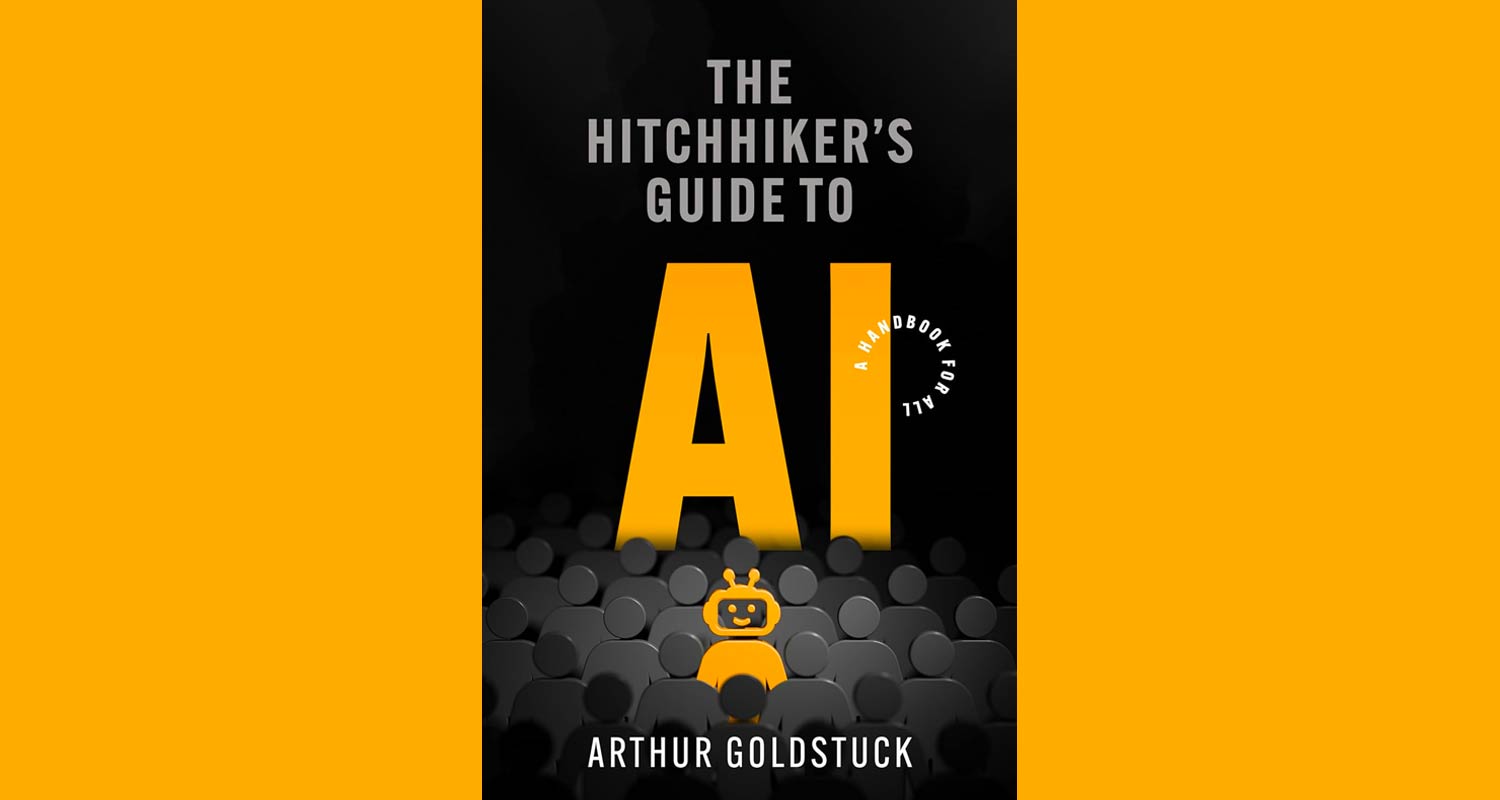 In Douglas Adams’ The Hitchhiker’s Guide to the Galaxy, protagonist Arthur Dent is plucked off Earth by Ford Prefect, a researcher for the electronic encyclopaedia of the same name, which provides information about every known planet in the galaxy.
In Douglas Adams’ The Hitchhiker’s Guide to the Galaxy, protagonist Arthur Dent is plucked off Earth by Ford Prefect, a researcher for the electronic encyclopaedia of the same name, which provides information about every known planet in the galaxy.
First published in 1979 and based on a radio play, Adams’ series of books has sold more than 15 million copies and attracted a cult following. So, South African technology journalist Arthur Goldstuck’s play on the title of the original novel was an inspired choice for his book analysing the latest revolution in tech: artificial intelligence and ChatGPT. It is also a play on a previous very successful book of his, The Hitchhiker’s Guide to the Internet, published in the early days of the world wide web.
Sam Altman led the efforts to make ChatGPT one of the fastest growing software applications in history, drawing investment and computing resources from Microsoft to achieve what many tech analysts believe will reorientate the way we work and engage with the world; unlock creativity and scientific discoveries; and allow humanity to achieve previously unimaginable feats.
The reality is that the waters are uncharted, and Goldstuck sets out to navigate them, using technical explanations interspersed with anecdotes and humour to appeal both to experts in the field and the less technologically minded.
He starts out by reminding us that if we use a smartphone, Google Maps, Apple Map or Waze, predictive text on WhatsApp, and grammar correction tools in Gmail and Word, we are using AI.
“In truth, AI has been practising on you, preparing for the big game when it comes out to put its skills on display in ways we never imagined possible,” he writes. “When they are fully trained and integrate learnings from the training of numerous other AI tools and models, they will transform any activity one can imagine. AI will make us all superhuman if we want it.”
That’s a pretty powerful premise, but Goldstuck explains that it’s the quality of the “prompt” (or question) to AI that predicates its response. He also unpacks “large language models” and why these have been the basis of the explosion in generative AI technology in the past year.
Cautionary note
“‘Large’ refers not to the size of the data set, or amount of data, but the number of parameters, or variables, in the model on which it was trained. ‘Trained’ is the process of teaching the language model how to understand and generate text by feeding it a large data set and using machine learning to help it learn to identify patterns in the data.”
This all sounds wonderful, especially perhaps for university students who spent the night at the pub before a 6 000-word history essay has to be handed in, but Goldstuck sounds a cautionary note. He reminds us that generative AI is based on “language models”, not “fact models”, which means it predicts what its next sentence should be based on on its access to billions of sentences and understanding of how to create a logical sequence of sentences. It is not designed to test the accuracy of the statements contained in those sentences.
Read: 2023 was the year of generative AI – what’s coming in 2024
“This brings us to a fundamental principle of using generative AI: always double-check any fact generated by a bot,” he writes.
Goldstuck has a chapter on AI and banking in South Africa, which he says is far ahead of banks in the US and noted that in 2023 the South African Reserve Bank implemented a rapid payments programme allowing instant settlement of EFTs between banks, demonstrating South Africa’s willingness to leverage AI and other emerging technologies in banking.

And he documents the fascinating case of Cape Town-born David Malan, who teaches an introduction to computer science at Harvard University alongside an AI teacher, based on GPT-3.5 and GPT-4.
Malan said: “Our hope is that, through AI, we can eventually approximate a 1:1 teacher: student ratio for every student in C50 by providing them with software-based tools that can support their learning, 24/7, at a pace and in a style that work best for them individually.”
Central to Goldstuck’s theme throughout his book is the notion that while in Silicon Valley innovation is driven by opportunity, across Africa it’s driven by need. By 2030, he reminds us, the world will be a very different place.
“Technology will help make many of the bad things worse, and many of the good things better. It will provide an enabling environment for those who want to use it both for self-enrichment and for the betterment of the world.”
Read: Amazon sellers warn misleading AI product reviews threaten sales
The Hitchhiker’s Guide to AI is a thoughtful book that takes a close look at one of the most significant developments of the year, with specific reference to Africa and developing economies. It is food for thought, written with a light touch while raising many of the most salient questions.
- The Hitchhiker’s Guide to AI, by Arthur Goldstuck, is published by Pan McMillan




